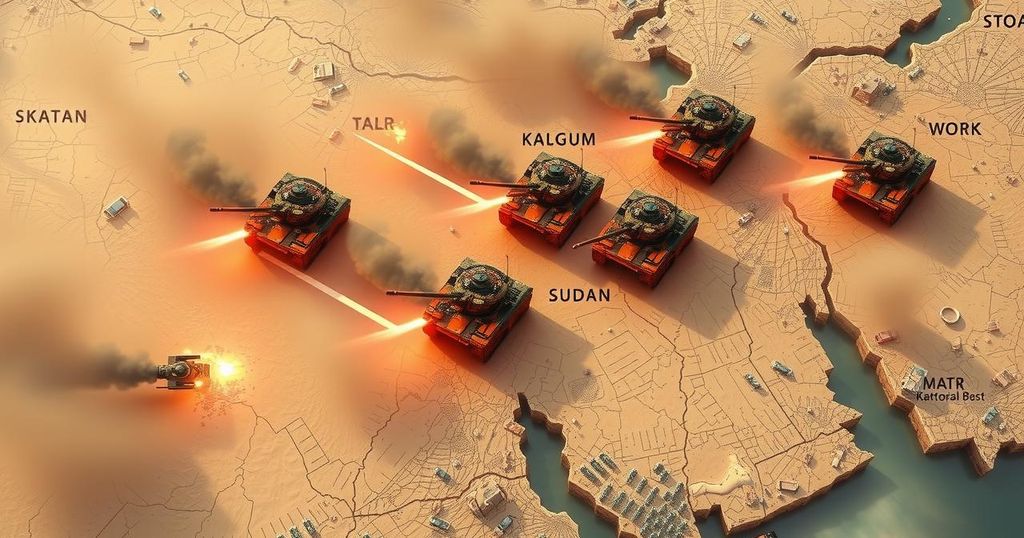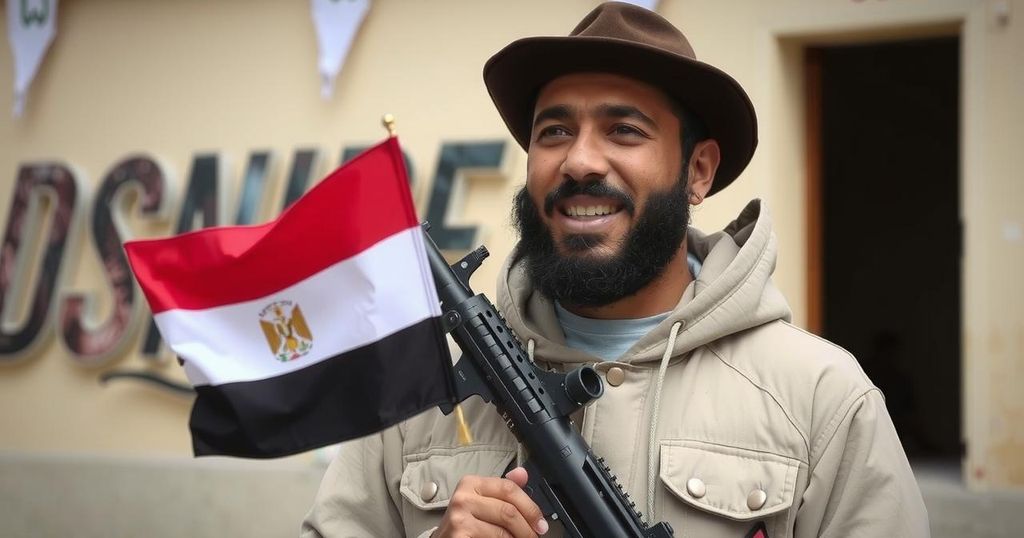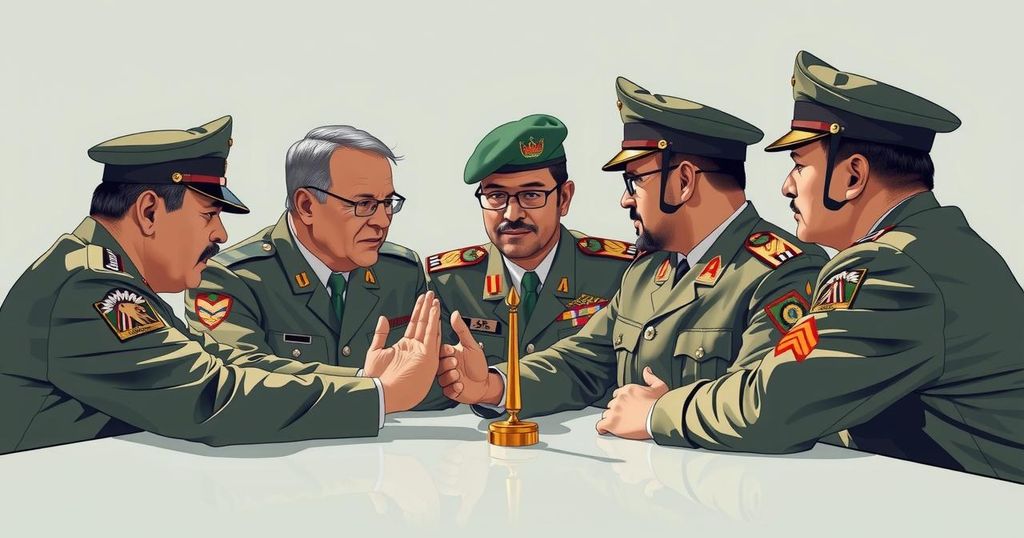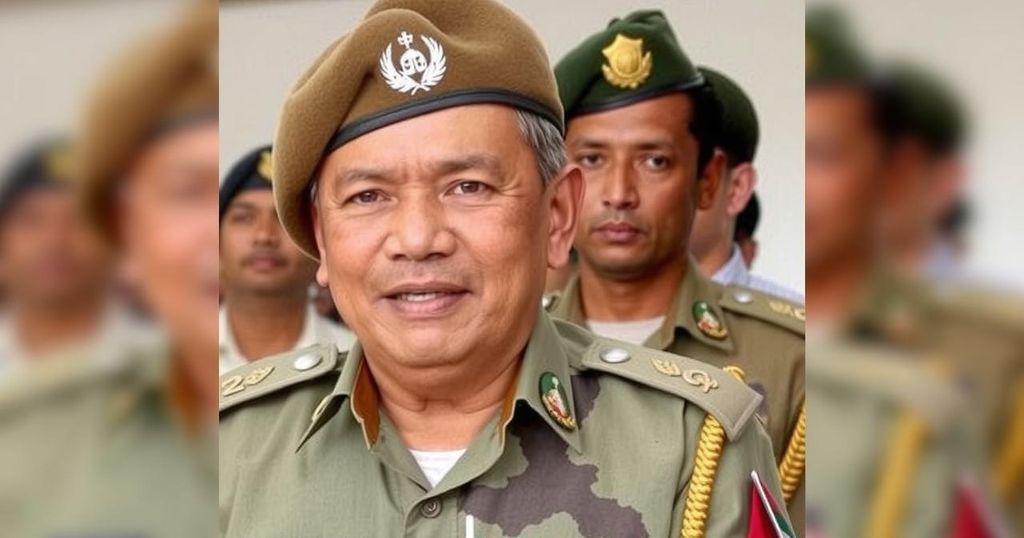Turning the Tide: SAF’s Strategic Offensive in Khartoum Against RSF
In October 2024, the SAF executed a significant offensive in Khartoum against the RSF, marking a pivotal moment in their ongoing conflict. The SAF surprised RSF forces, leading to territorial gains and strategic positioning across multiple fronts, particularly in Darfur. These developments followed General al-Burhan’s declaration at the UN, enhancing the SAF’s legitimacy in its campaign against the RSF.
In October 2024, the conflict between the Sudanese Armed Forces (SAF) and the Rapid Support Forces (RSF) marked a notable shift in dynamics, particularly evident in Khartoum where the SAF executed a significant offensive after extensive preparations. This offensive surprised RSF troops, forcing them into a defensive position, leading to losses in both territory and morale. The SAF’s new tactics not only involved rear assaults in Khartoum but also coordinated attacks on multiple fronts in Darfur, where they sought to disrupt RSF operations and protect El Fasher, the only major city under SAF control in the region.
The recent surge in military activity highlights the SAF’s growing capabilities, bolstered by new recruits and international military support, including fighter jets. The offensive commenced after General Abdel Fattah al-Burhan’s declaration at the UN, labeling the RSF as a terrorist group. This announcement underscored the SAF’s determination to consolidate territorial control in key urban areas and to sever the RSF’s supply lines.
In Darfur, the establishment of new fronts by the SAF-aligned Darfur Joint Forces aimed to distract the RSF and protect El Fasher as the RSF intensified its campaign there. Reported fatalities during this phase of the conflict increased sharply, exemplifying the violence and chaos affecting both military personnel and civilians. Furthermore, ethnic tensions have been exacerbated by these clashes, particularly affecting the Zaghawa community amidst RSF raids.
The SAF’s strategy included regaining control over previously lost strategic locations, such as Jabal Moya, which has significant implications for the influence and operational capacity of both forces in the region. This coordinated campaign indicates a restructuring of military priorities by the SAF, aimed at consolidating power and dismantling RSF strongholds, while also addressing the humanitarian consequences of the ongoing conflict.
The conflict in Sudan, primarily between the SAF and RSF, escalated in April 2023, leading to widespread violence and a significant humanitarian crisis. Various regions, especially Khartoum and Darfur, have experienced considerable devastation and loss of life. ACLED reports indicate alarming trends in political violence, with over 24,850 fatalities recorded since the onset of fighting. The SAF’s recent offensives reflect a strategic shift in military operations as they attempt to reclaim lost territories and stabilize key urban centers amid international scrutiny and support. Special focus has been placed on reinforcing military alliances and improving troop readiness, particularly through training and equipment acquisitions.
In conclusion, the shifting landscape of the Sudanese conflict exemplifies the complexities of warfare in urban and rural settings. The SAF’s recent offensives in Khartoum and Darfur signify a tactical evolution aimed at countering the RSF’s influence and re-establishing control over vital regions. As the conflict deepens, the humanitarian implications grow more severe, with various factions embroiled in a struggle that continues to exact a heavy toll on civilians and infrastructure alike.
Original Source: acleddata.com








Post Comment